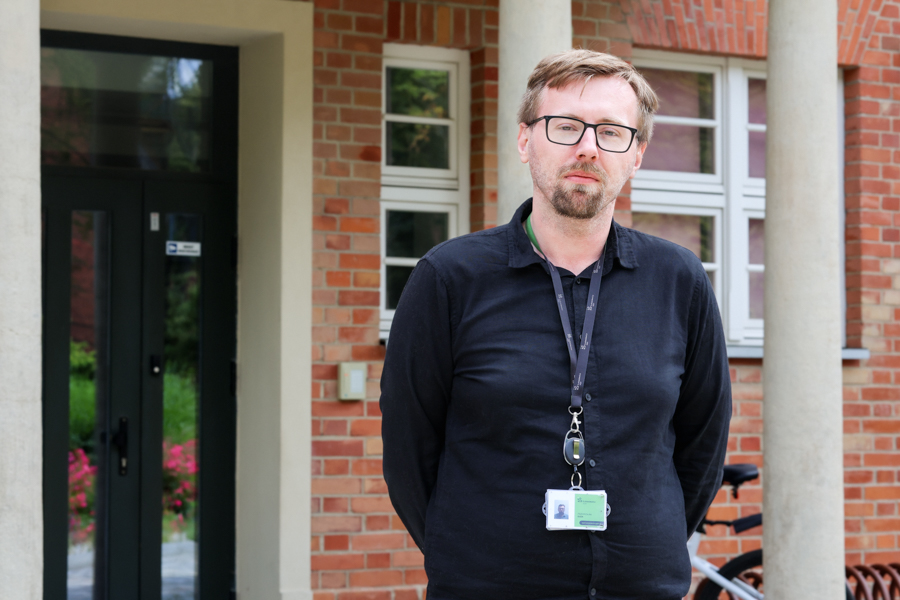Understanding the Brain – Two New Grants for Scientists at Łukasiewicz – PORT
Although neuroscience is advancing at an impressive pace, the brain remains one of the least understood organs. In response to the need for a deeper understanding of this complex system, two innovative research projects have been launched at the Łukasiewicz – PORT, both recently awarded funding by the National Science Centre (NCN).

Brain Research in the Spotlight
For years, the Łukasiewicz – PORT has been systematically developing research into the functioning of the nervous system. The newly awarded grants are not only a recognition of the work conducted by the Synaptogenesis Group, led by Dr. hab. Tomasz Prószyński, but also a real opportunity for progress in understanding neuropsychiatric disorders.
Dr. hab. Prószyński’s project, titled “Functions of the AMOTL1 protein in the dopaminergic and serotonergic systems of the brain”, received PLN 4.23 million in funding through the OPUS 28 competition and ranked first in the NZ3 (Cellular Biology) panel. Meanwhile, Dr. Przemysław Duda was awarded PLN 2.2 million in the SONATA 20 competition for his project “Identifying hippocampus-related and sex-specific changes in organisms with silenced AMOTL1 gene expression.”
A New Perspective on Disease Mechanisms
Dr. Duda’s project has the potential to shed new light on the mechanisms underlying bipolar disorder and sex differences in its manifestation. His research focuses on the role of a specific gene whose variability may affect the expression of affective disorder symptoms – depending on both sex and molecular mechanisms. The results will help better understand the origins of differences in the course of the illness, from forms dominated by manic episodes to those primarily characterized by depression. – Psychiatric disorders affect an individual’s ability to function in society – says Dr. Duda. – That’s why it is so important to study their underlying mechanisms and seek new treatment approaches.

The findings of these emerging studies may, in the future, improve diagnosis, enhance treatment precision, and accelerate the time it takes for patients to receive effective care.
The Need for Precision
Dr. hab. Tomasz Prószyński is exploring a different area of the brain, investigating how dysfunction of a single protein can lead to symptoms typical of various disorders, including schizophrenia, ADHD, and neurodegenerative diseases.
– Disruptions in the expression of a single gene can cause symptoms found across multiple conditions. That’s why we can’t talk about a one-gene-one-disease model – explains Dr. hab. Prószyński. He also points to a key challenge in treating brain disorders: the lack of drug specificity. – Current treatments act broadly across the brain, often causing numerous side effects. We need solutions that act selectively – targeting specific areas. And this is exactly the approach we are trying to develop.
From Gene to Symptom – A New Logic of Diagnosis
Dr. Duda emphasizes a shift in how psychiatric disorders are diagnosed – Today, we no longer try to link a single genetic change to a single disorder. Instead, we look for connections between specific genetic variations and particular symptoms.
Both projects employ tools that analyze how selected genetic changes influence the functioning of the nervous system. This approach aligns with the principles of precision and personalized medicine, which aims to tailor therapies to individual patients rather than broad diagnostic categories.
Public Expectations
Both researchers at Łukasiewicz – PORT stress that science takes time. – We’re often asked: when will there be a cure? Yet scientific progress usually comes through small, incremental steps – says Dr. hab. Tomasz Prószyński.
Dr. Duda adds: – A scientist doesn’t just look for answers. A scientist also looks for new questions. Science is exponential – one discovery often leads to two more questions. The synergy between science and business allows scientists to respond more rapidly to societal needs.

